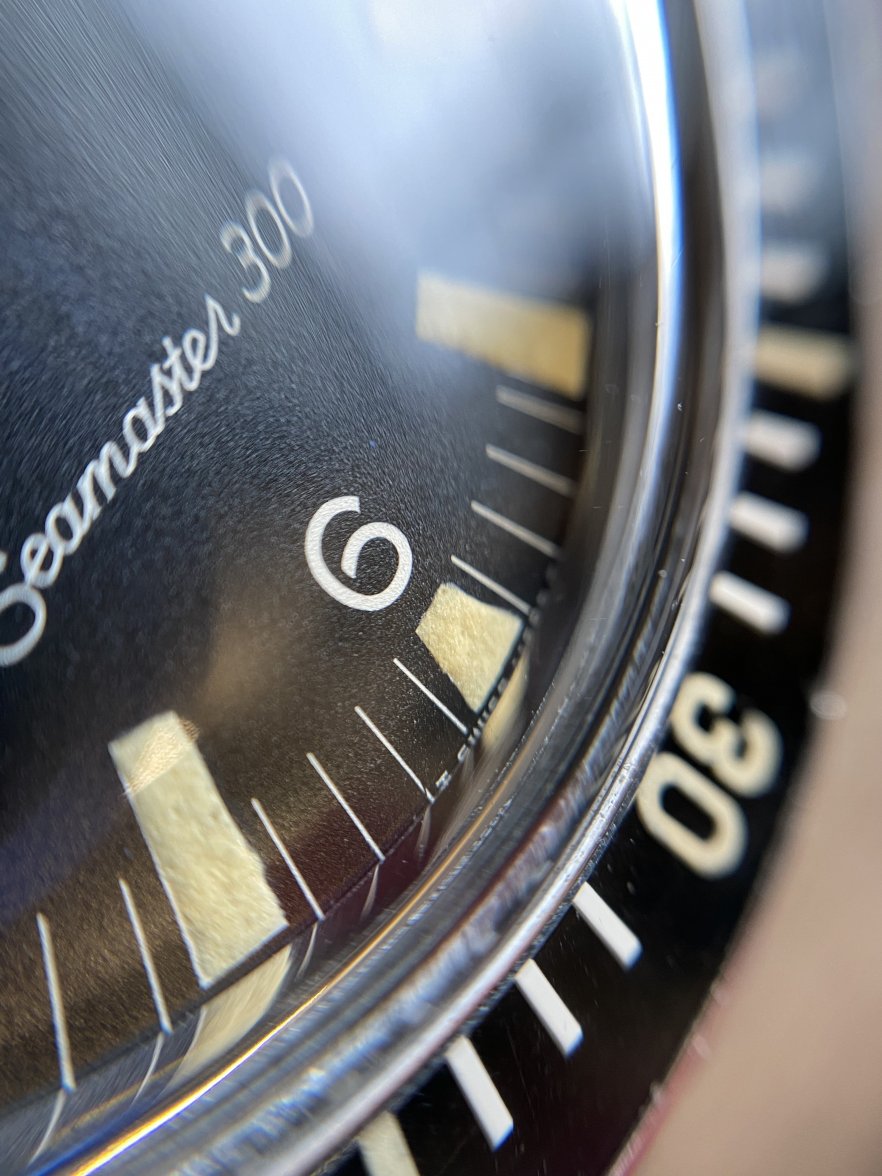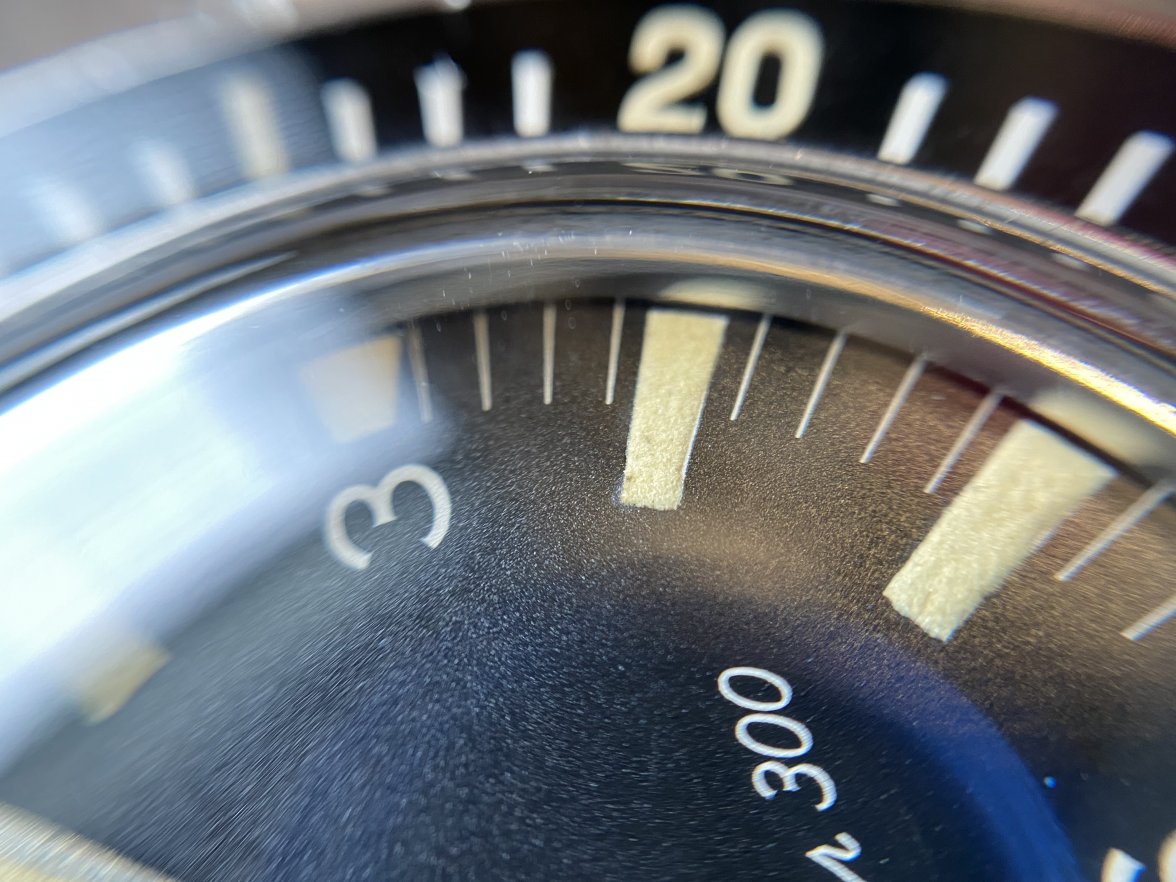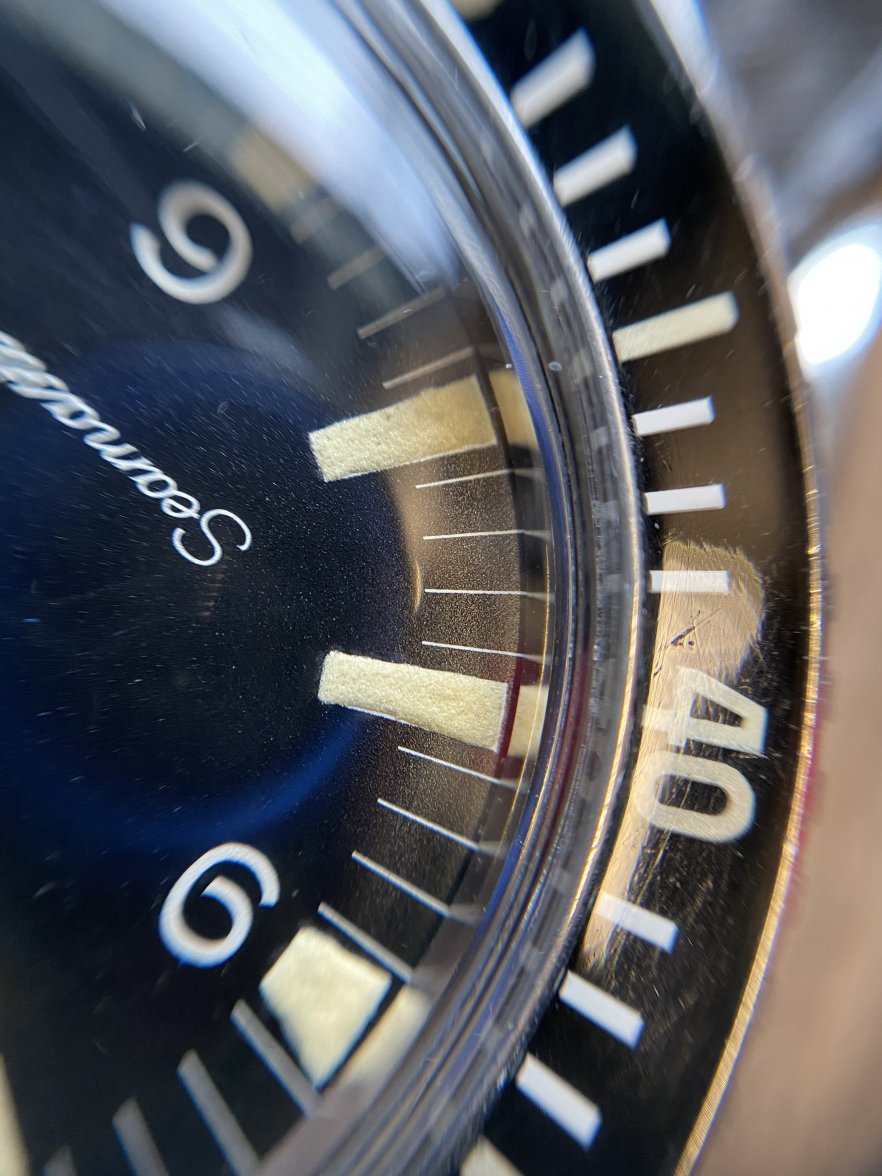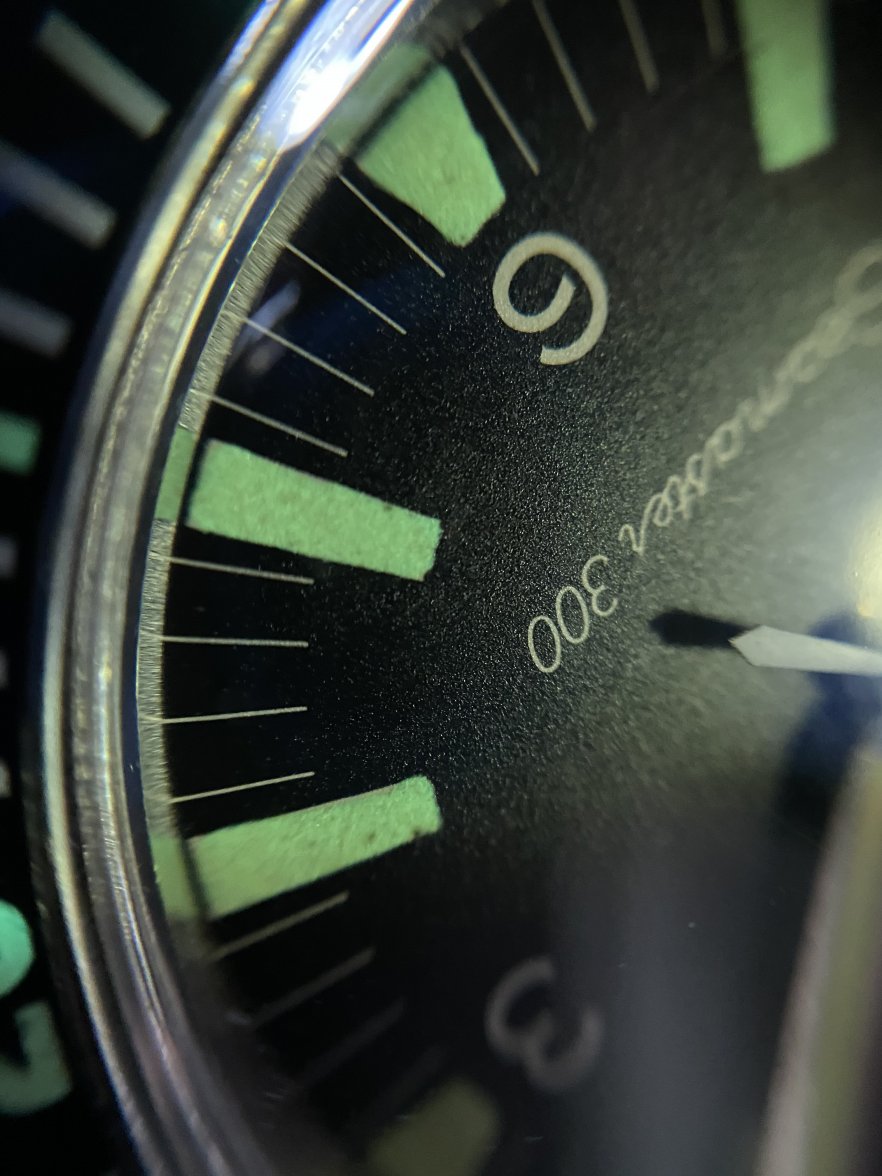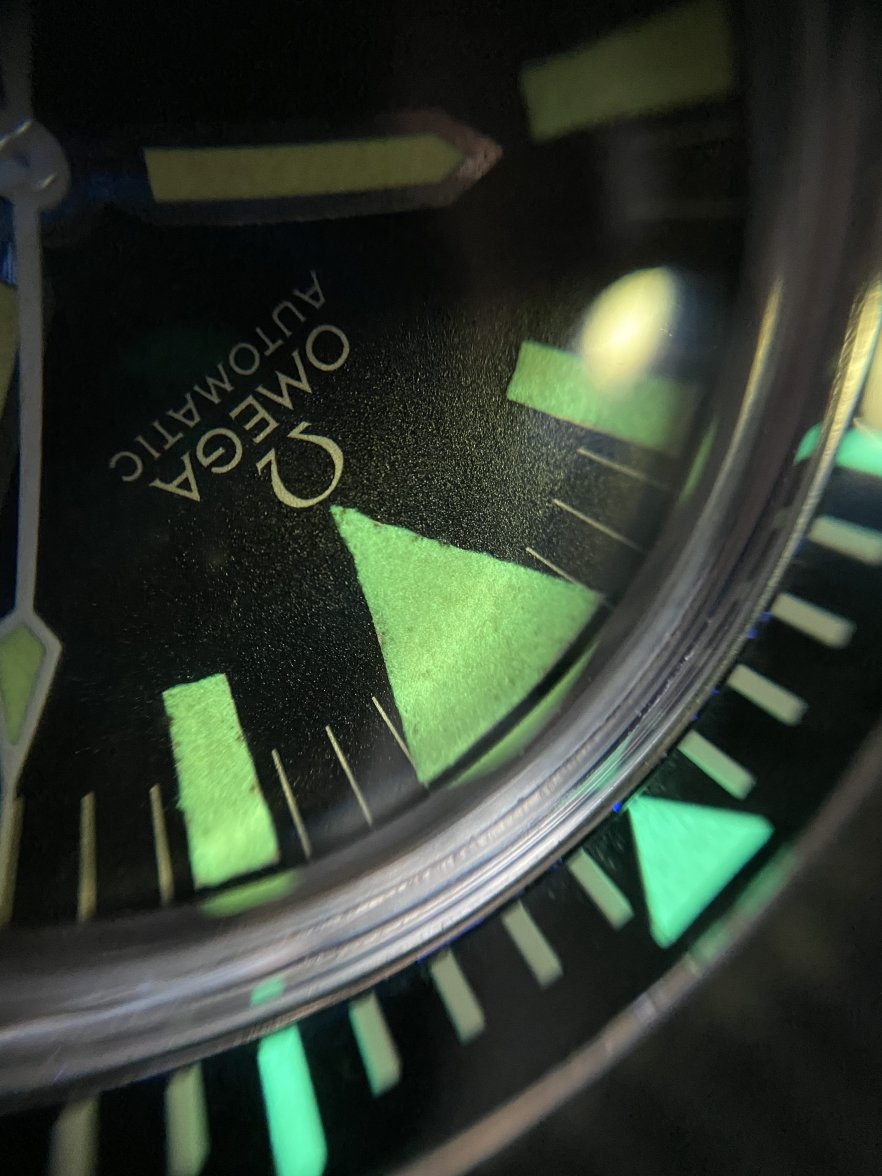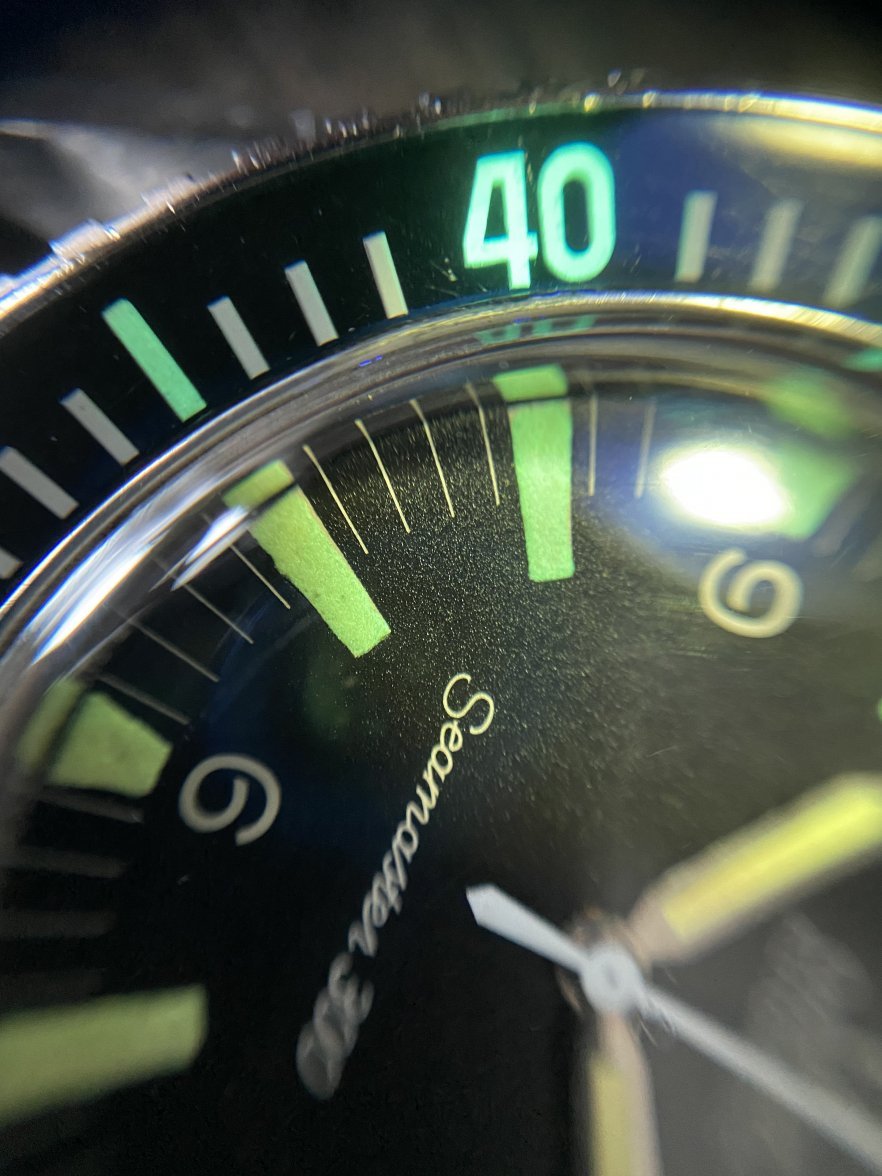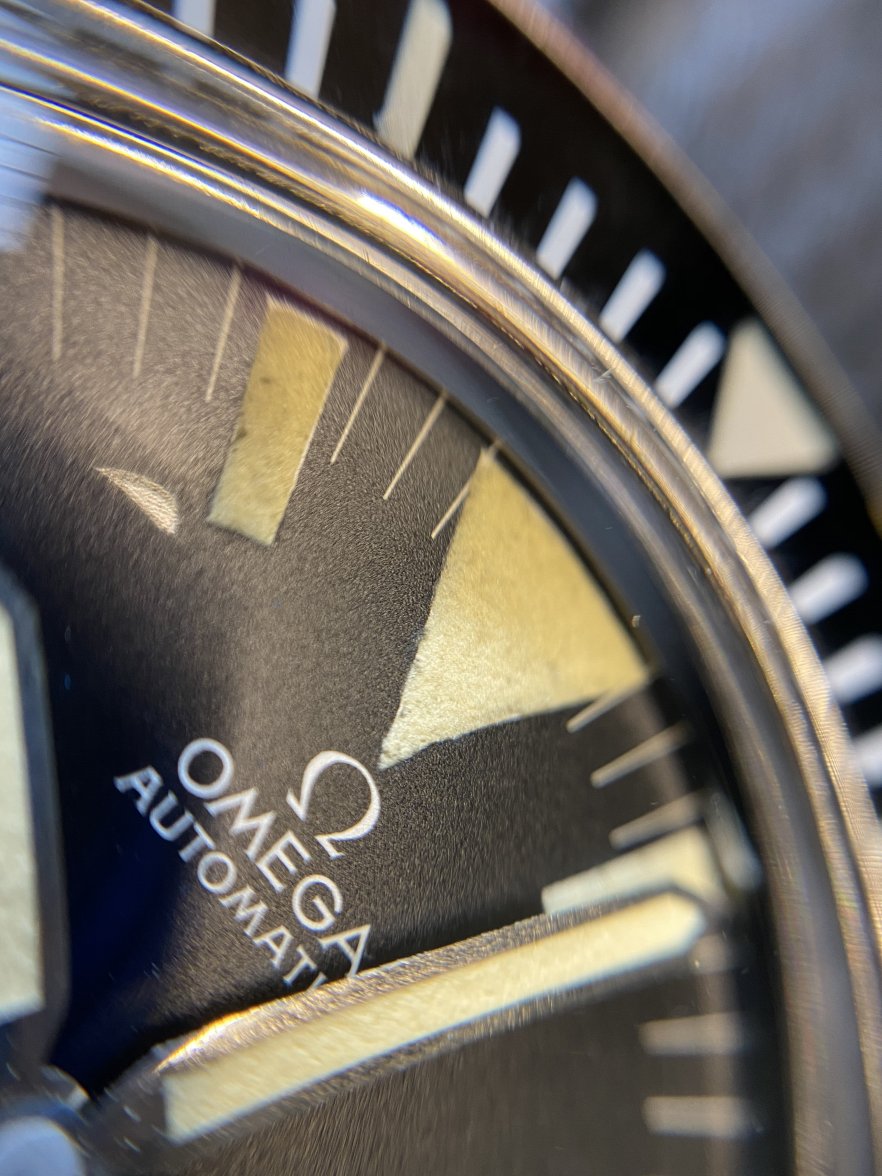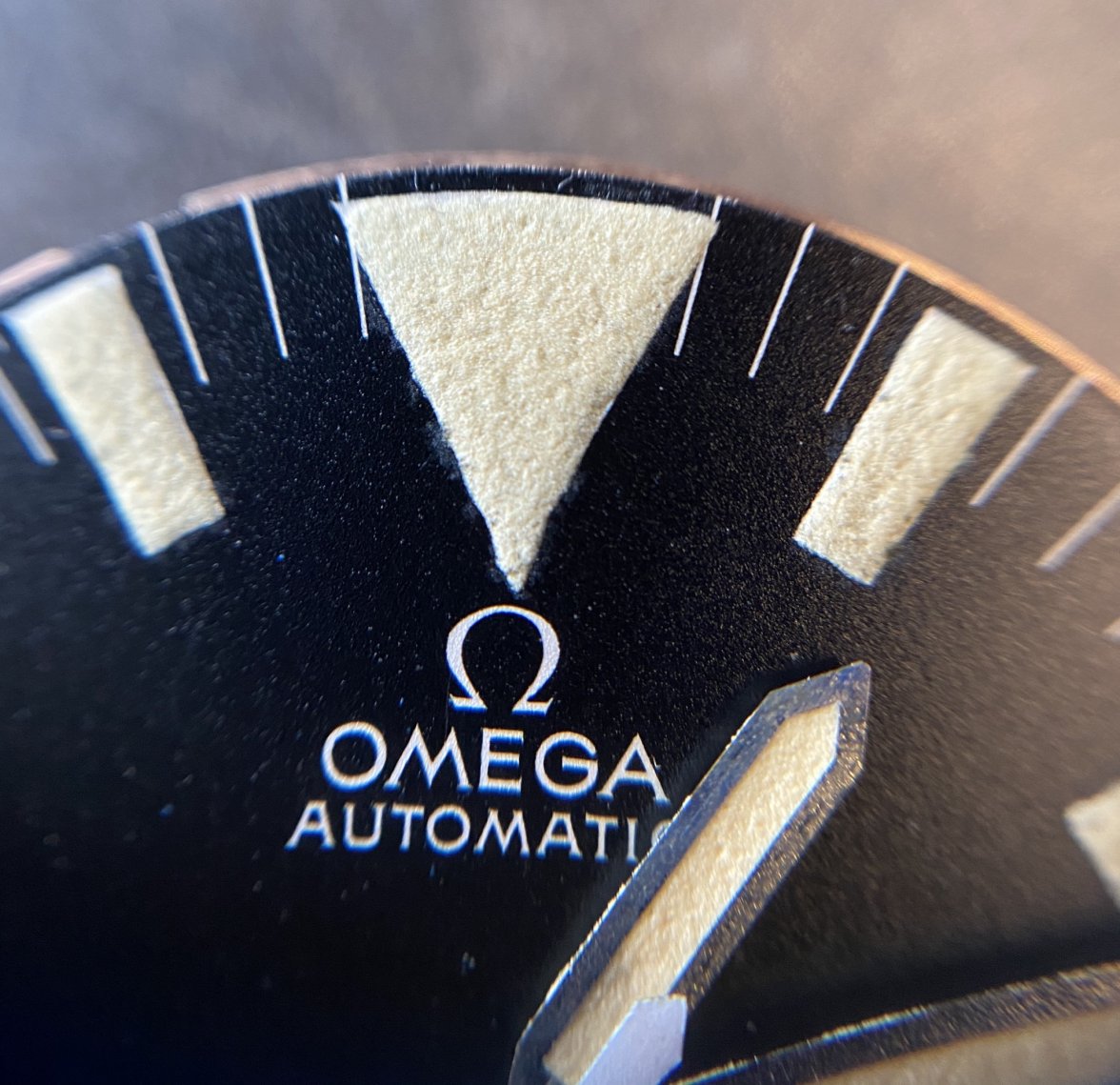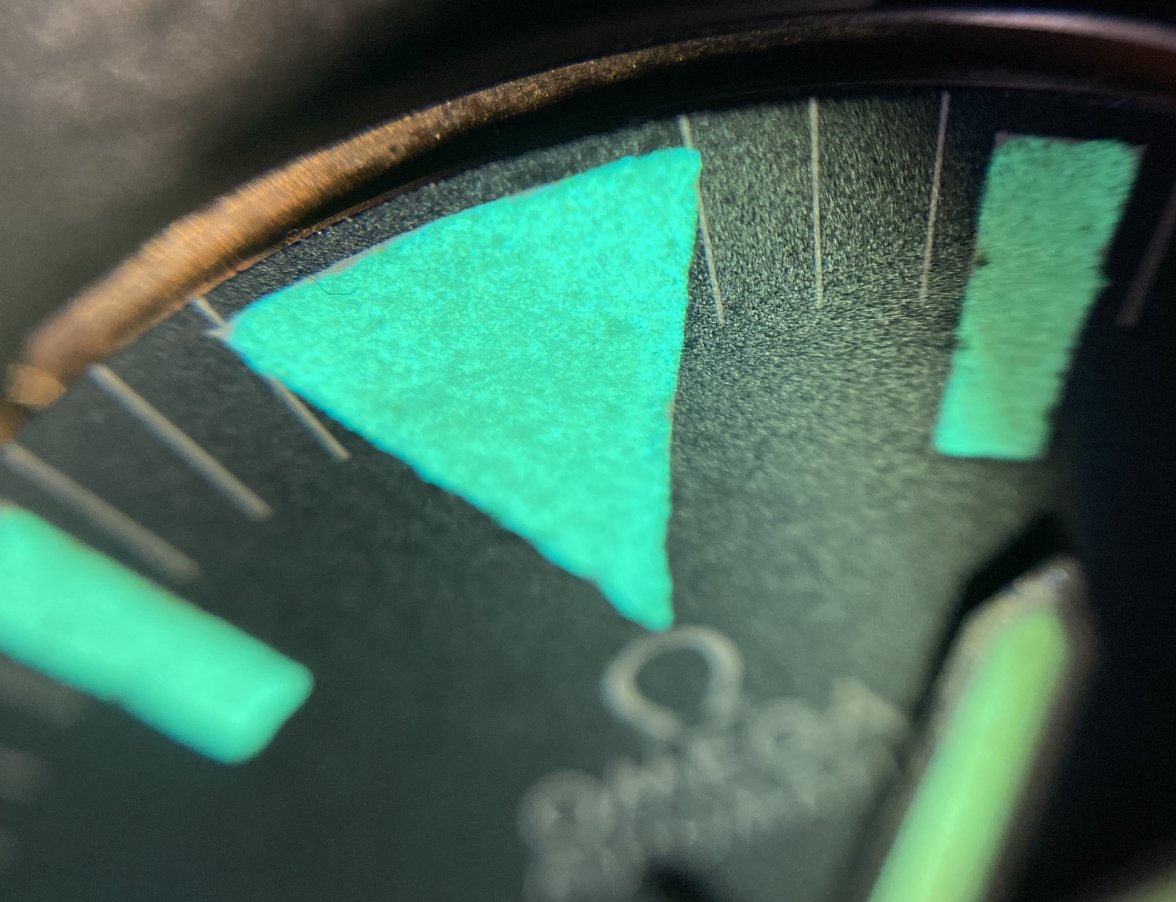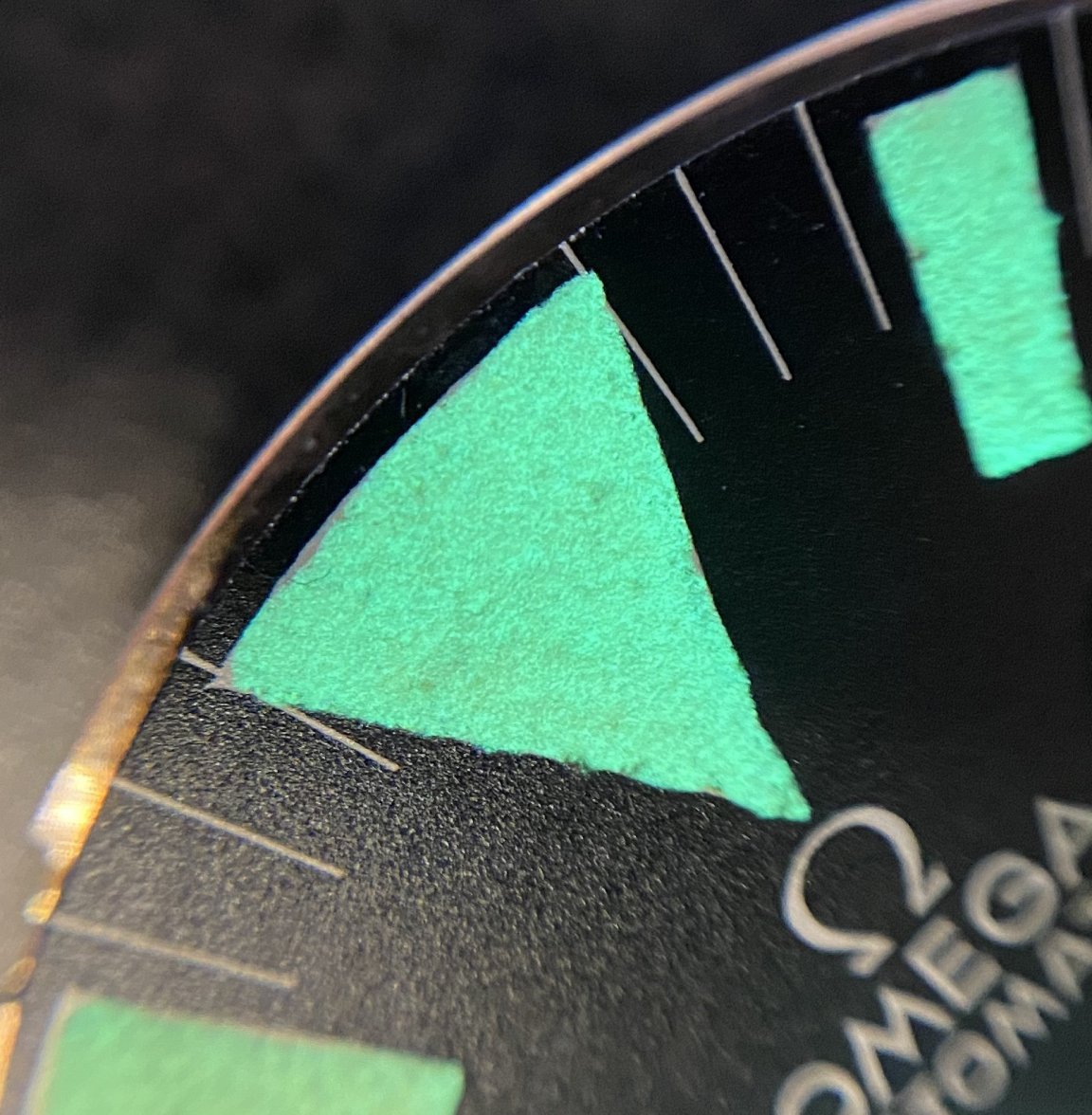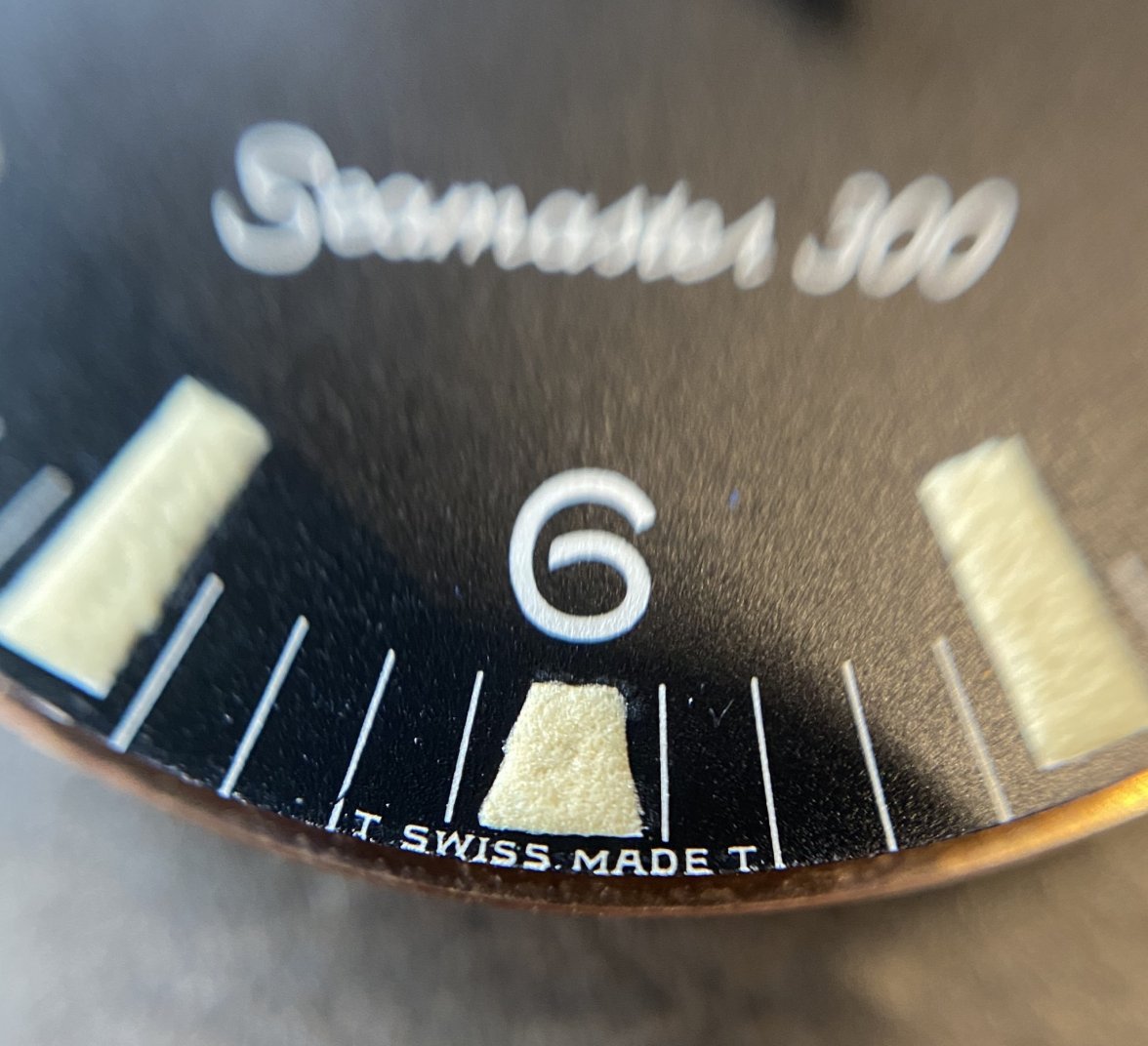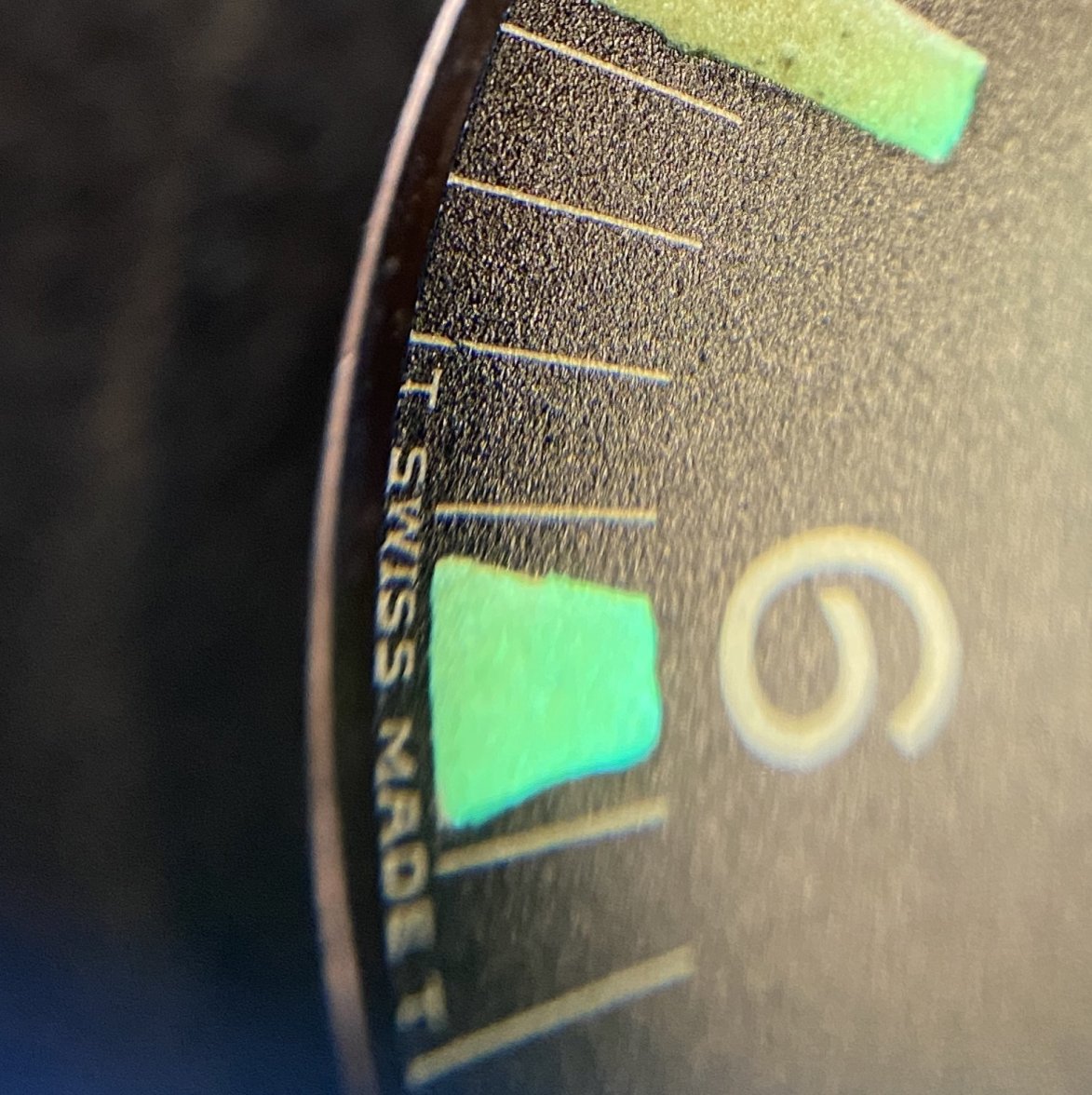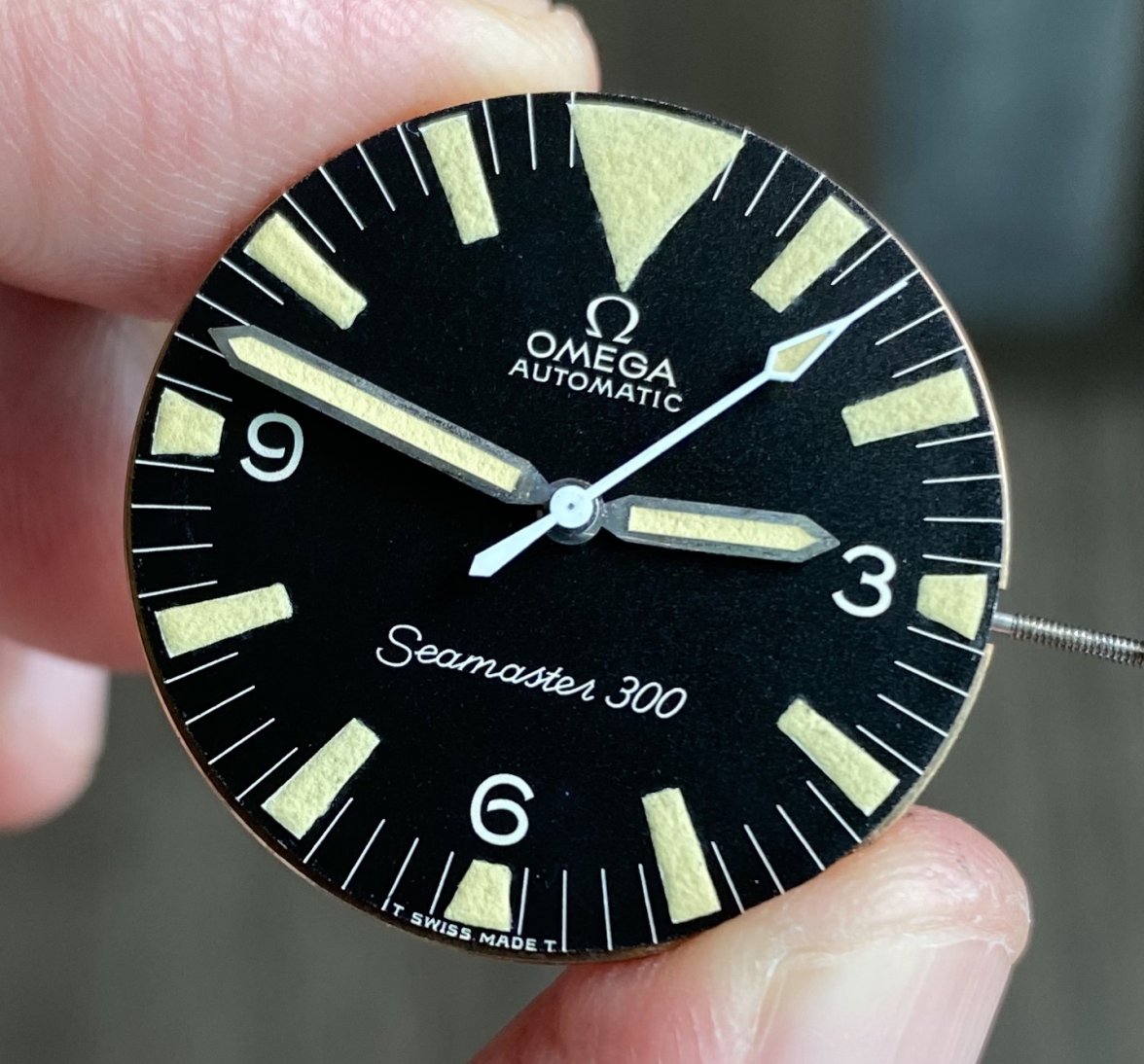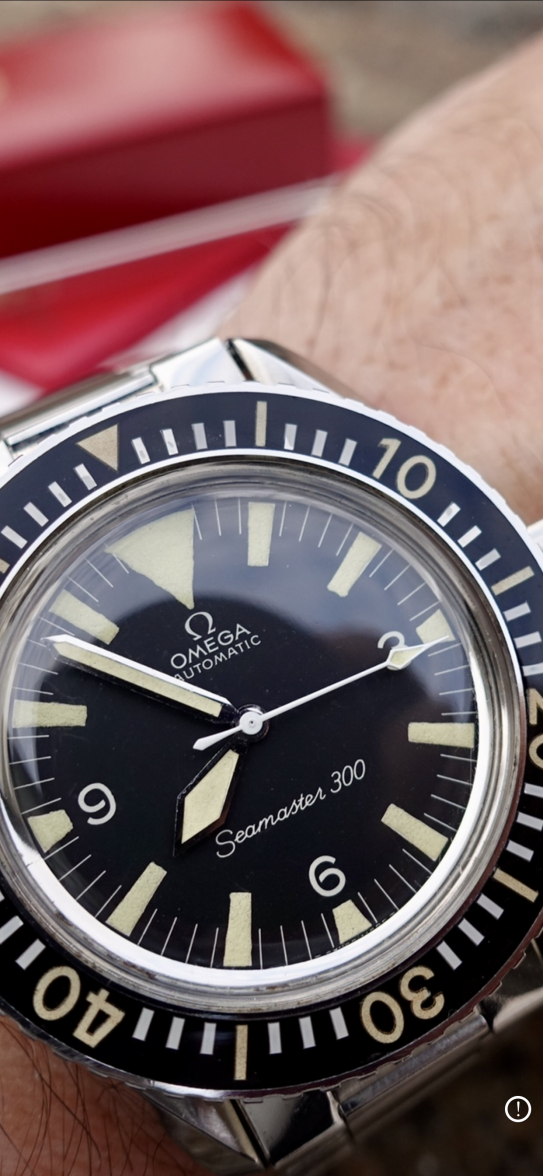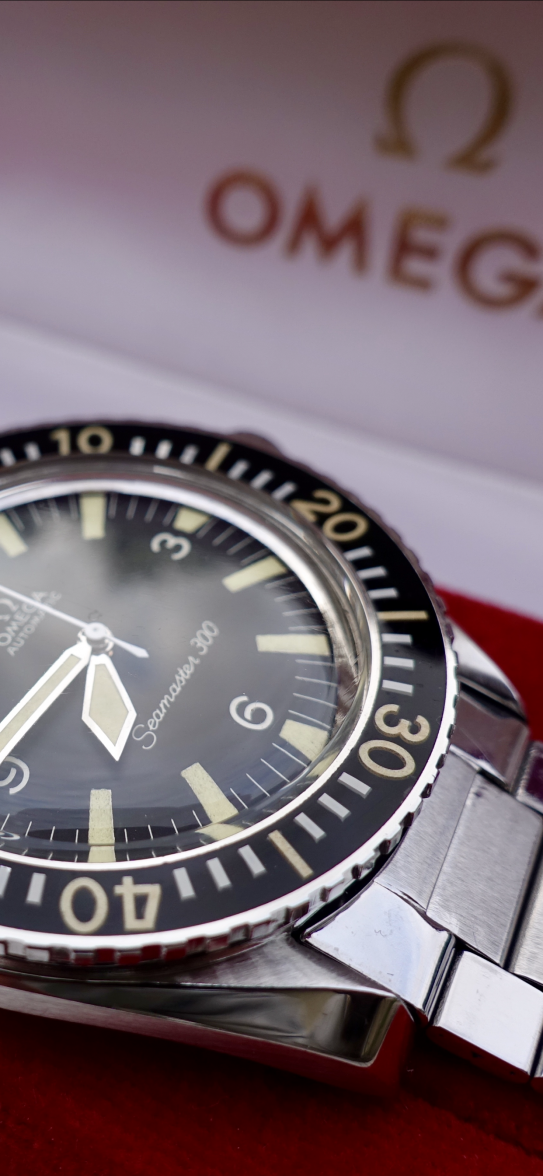reficul_x
·I noticed the pin holes interesting nuances back in 2004 when I was so crazy over Seamaster 300 165.024, in particular the Big Triangle 12 version Back then no one really called it big triangle, at least as far as I know. With a not so good command of English, I began to call it the Big Triangle Seamaster 300. I do not claim to coin that term, but I was sure that I made that up.
Long and Short, I also started to noticed that most original lume has that pin hole at 12 & 6. And that led me wondering if that is the mark of an original lume, without it, it isn’t. Back then when people still read reviews on ebay, I remembering contributing a little review on it.
With enough specimens, especially with those estate auction pieces, First owners or at least good provenance examples or simple really “damaged” with mouldy lumes, where it cannot be a case where the watch is modified, I draw my own conclusion that there were 2 type of examples that exist, with and without pin holes at 12 & 6. To date, I have had owned at least 30-40 pieces that past through my hands on just Seamaster 300 dates/ no date.
To complicate a little further, there were another 2 type of lume application, the earlier ones that existed from the 60s and a later from the 70s. I dare not define the exact dates if you can see as I did not explore and only collect Seamasters as I collect a variety of watches both vintageS and moderns.
The earlier 60s lume I believed was hand applied, and hence forth the lume always looks imperfect, exposing the white Part beneath which I believed was a “template” for the lume designed to be filled. The 60s tend to always look yellowish (let’s not Bring those mouldy examples in), and they are slightly thicker. They always glow in the dark after exposure to light and react to UV. So I believe these are tritium activated zinc sulphate as the phosphor. Very Consistent with many other watch companies Then.
Then we have the later lume, which I believe is made from the 70s onwards and they are usually green, extremely thin in thickness. I believe these are stamp padded, somewhat how Rolex does theirs in their 70s to early 80 (1984) and some stamp pad has too much “ink” soaked and hence gives us what we all love, the ultra maxi dial which is totally out of shape in some.
so before I head out of topic, I’ll like to show how an original lume, Earlier version the 60s, no pin hole Seamaster 300 should look like.
Pin holes are harder to achieve by the average relumer (though it has been done), and the stamp pad thin lume from the 70s are hard to achieve as well so that’s why I decided to show macro shots of an often faked, relumed dial of a Seamaster 300 so that this can be a good reference for the novice OR to a seasoned collector that may not have enough samples to know what’s original what’s not.
Here’s photos under daylight and under UV light. Noticed under UV, there is nearly no speckles of inconsistency of the glow unlike radium, where I believe radium destroy phosphor faster due to its high radioactive nature.
Hope you have found this article useful.
Long and Short, I also started to noticed that most original lume has that pin hole at 12 & 6. And that led me wondering if that is the mark of an original lume, without it, it isn’t. Back then when people still read reviews on ebay, I remembering contributing a little review on it.
With enough specimens, especially with those estate auction pieces, First owners or at least good provenance examples or simple really “damaged” with mouldy lumes, where it cannot be a case where the watch is modified, I draw my own conclusion that there were 2 type of examples that exist, with and without pin holes at 12 & 6. To date, I have had owned at least 30-40 pieces that past through my hands on just Seamaster 300 dates/ no date.
To complicate a little further, there were another 2 type of lume application, the earlier ones that existed from the 60s and a later from the 70s. I dare not define the exact dates if you can see as I did not explore and only collect Seamasters as I collect a variety of watches both vintageS and moderns.
The earlier 60s lume I believed was hand applied, and hence forth the lume always looks imperfect, exposing the white Part beneath which I believed was a “template” for the lume designed to be filled. The 60s tend to always look yellowish (let’s not Bring those mouldy examples in), and they are slightly thicker. They always glow in the dark after exposure to light and react to UV. So I believe these are tritium activated zinc sulphate as the phosphor. Very Consistent with many other watch companies Then.
Then we have the later lume, which I believe is made from the 70s onwards and they are usually green, extremely thin in thickness. I believe these are stamp padded, somewhat how Rolex does theirs in their 70s to early 80 (1984) and some stamp pad has too much “ink” soaked and hence gives us what we all love, the ultra maxi dial which is totally out of shape in some.
so before I head out of topic, I’ll like to show how an original lume, Earlier version the 60s, no pin hole Seamaster 300 should look like.
Pin holes are harder to achieve by the average relumer (though it has been done), and the stamp pad thin lume from the 70s are hard to achieve as well so that’s why I decided to show macro shots of an often faked, relumed dial of a Seamaster 300 so that this can be a good reference for the novice OR to a seasoned collector that may not have enough samples to know what’s original what’s not.
Here’s photos under daylight and under UV light. Noticed under UV, there is nearly no speckles of inconsistency of the glow unlike radium, where I believe radium destroy phosphor faster due to its high radioactive nature.
Hope you have found this article useful.
